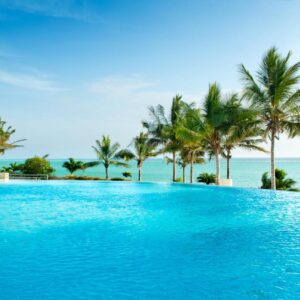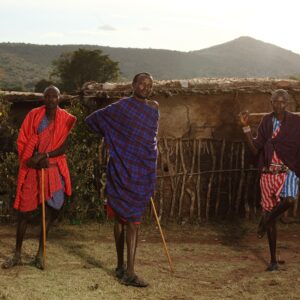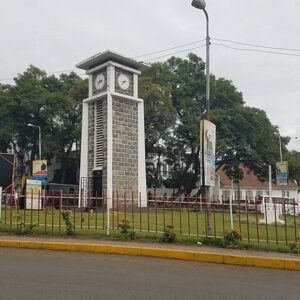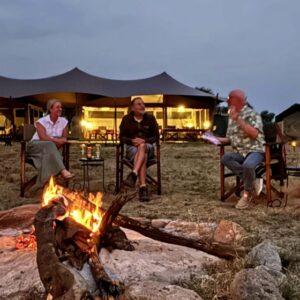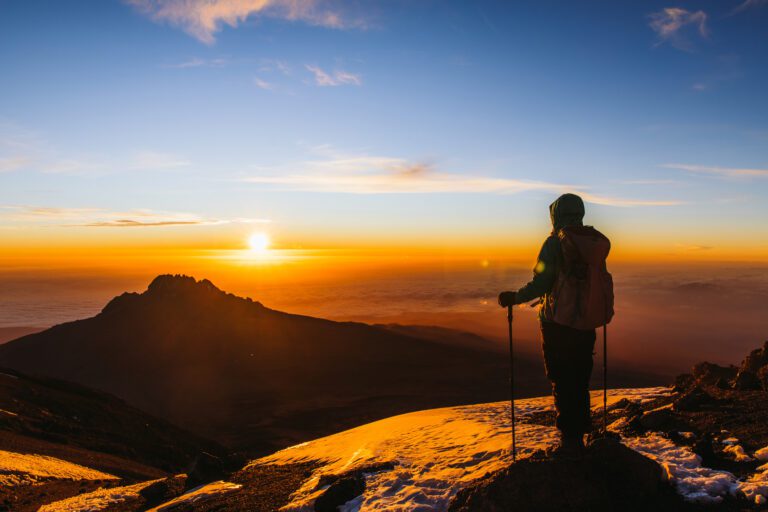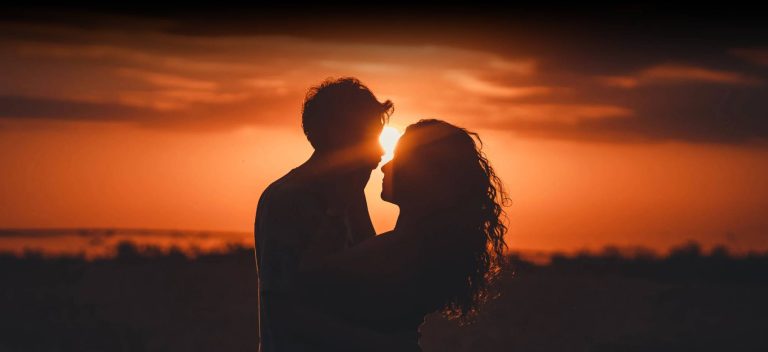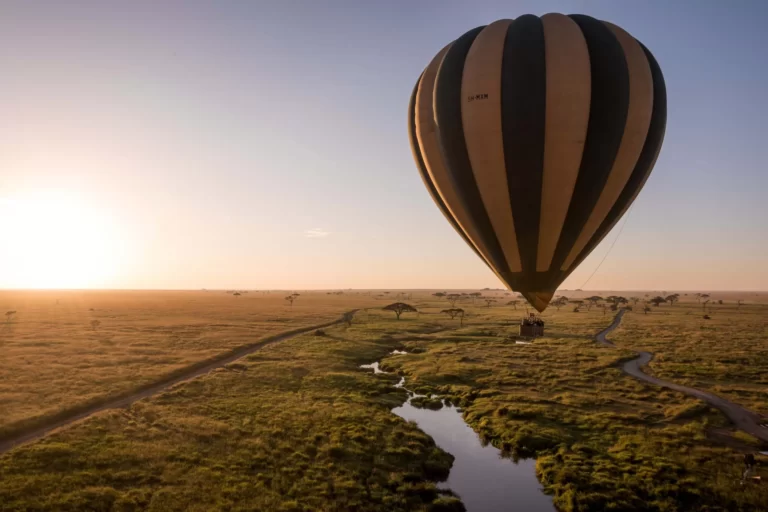Everything You Need to Know to Visit Ngorongoro Crater.
Nestled within the vast Ngorongoro Conservation Area in Northern Tanzania lies one of the world’s most breathtaking natural wonders: the Ngorongoro Crater. Often dubbed “Africa’s Garden of Eden” or “Noah’s Ark,” this incredible geological masterpiece is not merely a sight to behold but a vibrant, self-contained ecosystem teeming with an astonishing density of wildlife. For any safari enthusiast, a visit to the Ngorongoro Crater is an absolute must, promising unparalleled wildlife viewing experiences set against a backdrop of truly spectacular scenery.
This complete guide will delve into every facet of the Ngorongoro Crater, from its unique geology and diverse wildlife to the best times to visit and practical tips for planning your unforgettable journey.
1. Overview – Ngorongoro Crater
The Ngorongoro Crater is not, in fact, a crater in the conventional sense, but rather the largest intact, unfilled volcanic caldera in the world. Formed approximately 2.5 million years ago when a giant volcano erupted and collapsed inward, it created a magnificent natural amphitheater spanning over 260 square kilometers (100 square miles) with a rim rising 600 meters (2,000 feet) above the crater floor.
This colossal bowl acts as a natural enclosure, sustaining a resident population of around 25,000 large mammals year-round. The crater floor encompasses a remarkable diversity of habitats, including grasslands, swamps, forests, and a soda lake (Lake Magadi), all supporting an incredible array of wildlife within a relatively small area. What makes Ngorongoro even more unique is its status as a multi-use area where wildlife coexists with the semi-nomadic Maasai pastoralists, who are permitted to graze their livestock within the Conservation Area (though not on the crater floor itself). This blend of natural beauty, abundant wildlife, and cultural heritage has earned it dual UNESCO World Heritage status.
2. Safari Reviews – Ngorongoro Crater
Ngorongoro Crater consistently receives rave reviews from safari-goers, and for good reason. Its reputation for exceptional wildlife density and breathtaking scenery is well-earned. Visitors frequently highlight the almost guaranteed opportunities to see the “Big Five” (lion, leopard, elephant, rhino, buffalo) within a single day. The contained nature of the crater means animals are often found in close proximity, leading to incredible photographic opportunities and constant excitement.
However, its immense popularity also means it can get crowded, especially during peak dry season months. Despite the potential for multiple safari vehicles at a sighting, the sheer spectacle of the wildlife and the dramatic backdrop of the caldera often overshadow this minor inconvenience. Many guides masterfully navigate the crater to provide the best possible viewing angles and experiences, ensuring that the magic of Ngorongoro remains undiminished. It’s a place that tends to exceed expectations due to its sheer abundance of life.
3. Wildlife & Animals – Ngorongoro Crater
The Ngorongoro Crater boasts an astonishing concentration of wildlife, making it a predator’s paradise and a dream for animal lovers. Its permanent water sources and lush grazing areas act as a magnet, drawing and sustaining a diverse resident population.
The Big Five:
Lions: The crater is home to one of Africa’s densest lion populations, and sightings are highly probable. Large prides are often seen resting on the plains or stalking prey. Leopards: While always elusive, leopards are present in the crater, often found in the more wooded areas along the rim or in the Lerai Forest on the crater floor. Spotting one requires patience and a sharp-eyed guide, but it’s a thrilling reward.
Elephants. Mostly impressive bull elephants are found on the crater floor, as the cows and calves typically prefer the heavily forested crater slopes and rim. Look for their enormous tusks. Black Rhinos. Ngorongoro offers one of the best chances in Tanzania, and indeed East Africa, to see the critically endangered black rhino. They are heavily protected, and while still rare, consistent sightings occur. Buffalo: Large herds of Cape buffalo graze the plains, providing a vital food source for the crater’s predators.
Other Predators:
Spotted Hyenas. Abundant and often seen in large clans, particularly near kills. They are highly efficient hunters, not just scavengers. Cheetahs. Though preferring open plains, cheetahs are present and can be seen hunting gazelles. Jackals & Servals. Commonly sighted smaller carnivores. Bat-eared Foxes. Often seen foraging for insects.
Herbivores:
Massive herds of wildebeest and zebras dominate the plains.
Numerous gazelle species (Grant’s and Thomson’s) are ubiquitous.
Hippos wallow in the permanent pools like the Ngoitokitok picnic area.
Other commonly sighted animals include elands, impalas, warthogs, waterbucks, and hartebeest.
4. Birds – Ngorongoro Crater
For birdwatching enthusiasts, the Ngorongoro Crater is a veritable paradise, boasting over 500 recorded bird species. The diverse habitats within the caldera, from open grasslands and swamps to the soda lake and forests, attract a wide variety of avian life, both resident and migratory.
Lake Magadi: The alkaline waters of Lake Magadi often attract thousands of flamingos (both Greater and Lesser), creating a stunning pink spectacle, particularly during the wet season.
Waterfowl: Other water birds such as ducks, geese, plovers, and avocets are commonly found around the lake and swamps.
Raptors: The crater’s skies are patrolled by magnificent raptors, including African Fish Eagles, Tawny Eagles, Martial Eagles, and various vulture species (Lappet-faced, White-backed, Rüppell’s Griffon Vultures), often seen circling over kills.
Plains Birds: On the grasslands, you’ll encounter ostriches, Kori Bustards, crowned cranes, and various francolins and guinea fowl.
Forest & Bush Birds: The forested areas and dense bush are home to species like Superb Starlings, hornbills, turacos, and various songbirds.
5. Best Time to Visit – Ngorongoro Crater
The Ngorongoro Crater is remarkable in that it offers exceptional wildlife viewing year-round due to its resident animal population and permanent water sources. However, certain times of the year offer distinct advantages:
Dry Season (June to October):
Pros: This is generally considered the peak season for safaris. The vegetation is sparse, making animals easier to spot as they congregate around predictable water sources. Weather is typically dry, sunny, and pleasant.
Cons: Can be more crowded, especially around popular sightings. Dust levels can be higher. Prices for lodges are at their peak.
Wet Season (November to May):
Pros: The landscape transforms into a lush, vibrant green, creating stunning photographic opportunities. There are fewer tourists, leading to a more intimate experience and often lower prices for accommodation. This period (especially February-March) is also the calving season for the wildebeest migration in the adjacent Ndutu plains (part of the larger Ngorongoro Conservation Area), which attracts a high concentration of predators. Migratory birds are present, making it a birdwatcher’s delight.
Cons: Roads can be muddy and slippery, potentially making some areas less accessible. Short, heavy downpours can occur, though usually don’t last all day. Long grass can make spotting more challenging.
Conclusion: For general wildlife viewing, the dry season is excellent. For photography, fewer crowds, better prices, and the drama of calving season (adjacent to the crater), the wet season offers unique appeal.
6. Weather & Climate – Ngorongoro Crater
Due to its altitude, the Ngorongoro Crater experiences a distinct climate compared to the surrounding plains.
Altitude: The crater rim sits at an elevation of around 2,300 meters (7,500 feet) above sea level, while the crater floor is approximately 1,700 meters (5,600 feet).
Temperatures:
Daytime (on the crater floor): Generally pleasant to warm, ranging from 20-28°C (68-82°F) depending on the season.
Mornings & Evenings (especially on the rim): Can be surprisingly cold, particularly in the dry season (June-October). Temperatures can drop to near freezing, sometimes even with frost.
Rainfall:
Long Rains: March to May sees the heaviest rainfall, often characterized by afternoon thunderstorms.
Short Rains: November to December brings shorter, less intense rain showers.
Dry Season: June to October is generally dry with very little to no rainfall.
Layering is Key: Due to the fluctuating temperatures between early mornings on the rim, daytime on the crater floor, and evening chills, dressing in layers is highly recommended.
7. Getting There – Ngorongoro Crater
The Ngorongoro Crater is a cornerstone of Tanzania’s Northern Safari Circuit and is easily accessible, primarily by road.
By Road:
Most visitors travel to Ngorongoro as part of a multi-day safari circuit from Arusha or Moshi. The drive from Arusha to the Ngorongoro Conservation Area gate takes approximately 3-4 hours on well-maintained roads.
Once inside the Conservation Area, it’s about a 30-45 minute drive to the crater rim and the descent road to the crater floor.
By Air:
The closest airstrip is Lake Manyara Airstrip, which is about an hour’s drive from the Ngorongoro Crater rim.
Scheduled light aircraft flights connect Lake Manyara to Arusha, the Serengeti, and Zanzibar, offering a faster (though more expensive) alternative to long road transfers. This is particularly useful for longer itineraries combining different parts of Tanzania.
Crater Gate Times: The gate to descend into the crater floor typically opens at 6:00 AM and closes at 4:00 PM. Vehicles are generally allowed to spend a maximum of 6 hours on the crater floor per visit.
8. Malaria & Safety – Ngorongoro Crater
Malaria: The risk of malaria at the Ngorongoro Crater rim (due to its high altitude and cooler temperatures) is generally considered to be low. However, the crater floor and surrounding lowlands (like Karatu, where many lodges are located) are malaria risk areas. It is highly recommended to consult your doctor or a travel clinic well in advance of your trip for advice on malaria prophylaxis and other necessary vaccinations. Always use insect repellent with DEET, cover up at dawn and dusk, and sleep under a mosquito net if provided.
Safety:
Wildlife: You are in a wild environment with dangerous animals. Always stay inside your safari vehicle unless at designated picnic or restroom areas.
Listen to your Guide: Your safari guide is highly experienced and knowledgeable about animal behavior. Always follow their instructions meticulously regarding safety.
Unfenced Lodges: Many lodges on the crater rim or in the Karatu area are unfenced, meaning wild animals can roam freely, especially at night. Always accept an escort from lodge staff to and from your room after dark.
Respectful Viewing: Maintain a respectful distance from wildlife. Do not make loud noises, throw objects, or attempt to attract animals’ attention.
Travel Insurance: Comprehensive travel insurance that includes medical evacuation is absolutely crucial for any safari to Tanzania.
9. Accommodation & Where to Stay – Ngorongoro Crater
Accommodation options for visiting the Ngorongoro Crater fall into two main categories: lodges on the crater rim and lodges/camps in the nearby Karatu area.
Lodges on the Crater Rim:
Pros: Offer unparalleled, breathtaking views directly into the crater. Provide immediate access to the crater descent road, allowing for early morning entry.
Cons: Generally more expensive, can be very cold at night, and tend to be larger, busier properties.
Examples:
Luxury: Ngorongoro Crater Lodge (ultra-exclusive, opulent), The Highlands (unique dome-shaped suites, intimate), Ngorongoro Serena Safari Lodge (classic, well-located).
Mid-range: Ngorongoro Sopa Lodge (good views, solid option).
Lodges/Camps in the Karatu Area (Outside the Crater):
Pros: More varied price points, from mid-range to luxury. Often set in charming locations (e.g., coffee plantations). Offer a different atmosphere, sometimes with additional activities like coffee tours or cultural visits. The drive to the crater gate is about 30-60 minutes.
Cons: Requires a short drive to the crater gate each morning.
Examples:
Luxury: Gibb’s Farm (historic, charming, farm-to-table focus), Plantation Lodge (lush gardens, relaxed atmosphere).
Mid-range: Marera Valley Lodge, Rhotia Valley Tented Lodge, Country Lodge.
Budget: Various guesthouses and basic camps in Karatu.
Public Campsites: There are public campsites on the crater rim (e.g., Simba Campsite) for those on budget camping safaris. These offer basic facilities and can be very cold, but provide incredible access.
10. Ngorongoro Crater FAQs
Can you stay inside the Ngorongoro Crater?
No, generally not. All visitor accommodations (lodges, permanent camps) are located on the crater rim or in the nearby Karatu area. Limited public campsites are on the rim. Only researchers with special permits may camp on the crater floor.
How long should I spend in the Ngorongoro Crater?
Most visitors spend one full day on a game drive on the crater floor (typically 5-6 hours inside). This is usually sufficient to experience its incredible wildlife density. Some itineraries may include two half-day drives, but one full day is common.
Is the Ngorongoro Crater crowded?
It can be, especially during peak safari season (dry season, June-October) and around popular sightings. However, the crater’s large size and vehicle management efforts help disperse the crowds. Descending early in the morning (as soon as the gate opens) can help avoid some of the initial rush.
Can I see the Big Five in one day in Ngorongoro?
Yes, Ngorongoro Crater offers one of the highest probabilities of seeing all of the Big Five (lion, leopard, elephant, rhino, buffalo) within a single day due to its high wildlife density and contained environment.
Are there walking safaris in Ngorongoro Crater?
Walking safaris are generally not permitted on the crater floor itself due to the high density of dangerous animals. However, some lodges on the rim or in the Karatu area offer guided walks on the crater rim or in the surrounding Ngorongoro Highlands, which can be a wonderful experience.
Is Ngorongoro Crater part of the Great Wildebeest Migration?
No, the animals within the Ngorongoro Crater are largely resident and do not participate in the Great Migration. However, the larger Ngorongoro Conservation Area (which includes the crater) is a key area for the migration’s calving season (typically December-March) on the short-grass plains of Ndutu, located just outside the main crater.
The Ngorongoro Crater is more than just a destination; it’s an experience that truly captures the essence of the African wilderness. Its unique geology, astounding wildlife, and rich cultural tapestry make it an unforgettable highlight of any Tanzanian safari.

